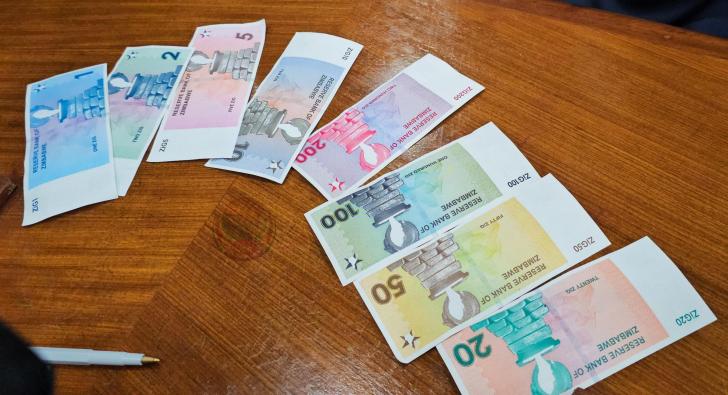News / National
Zimbabwe central bank injects US$190 million to meet forex demand
03 Sep 2024 at 13:37hrs |
0 Views

Zimbabwe's central bank has injected US$190 million into the foreign-exchange market to meet demand for dollars and maintain economic stability since the introduction of a new bullion-backed currency, a monetary policy committee member said.
The southern African nation began using the ZiG, short for Zimbabwe Gold, in April. The adoption of the currency, backed by reserves of gold, precious metals and cash held at the Reserve Bank of Zimbabwe, is seen as important step to end the country's reliance on dollars by 2026.
"Initially, there was not much need to intervene at the launch of ZiG," Persistence Gwanyanya said in a phone interview on Monday.
"But now there has been, with the emerging volatilities, which show reduced dollarization in the economy from 85% to 60%."
As part of the so-called strategic intervention, in late July, the central bank said it put US$50 million into the market to meet demand for dollars among Zimbabwe's lenders.
The Reserve Bank is using foreign-exchange proceeds collected from exporters to inject dollars into the market, Governor John Mushayavanhu said last week.
Zimbabweans have used US dollars to pay for everyday living costs, including transport, medicines and food, since 2009, when the national currency was scrapped after a failed land-reform policy set off a hyperinflation spiral that wiped out their savings.
The ZiG is Zimbabwe's sixth attempt at establishing a functional local medium of exchange in 15 years.
"Dedollarizsation is happening faster than we expected," Gwanyanya said. "We tend to experience these challenges, so we need to manage all the pressures."
The ZiG trades at 13.86 per dollar on the official market, data posted Monday on the central bank's website shows.
A greenback fetches between 16 and 26 ZiG on the streets of the capital, Harare, according to ZimPriceCheck.Com, a website that tracks official and unofficial exchange rates.
The southern African nation began using the ZiG, short for Zimbabwe Gold, in April. The adoption of the currency, backed by reserves of gold, precious metals and cash held at the Reserve Bank of Zimbabwe, is seen as important step to end the country's reliance on dollars by 2026.
"Initially, there was not much need to intervene at the launch of ZiG," Persistence Gwanyanya said in a phone interview on Monday.
"But now there has been, with the emerging volatilities, which show reduced dollarization in the economy from 85% to 60%."
As part of the so-called strategic intervention, in late July, the central bank said it put US$50 million into the market to meet demand for dollars among Zimbabwe's lenders.
Zimbabweans have used US dollars to pay for everyday living costs, including transport, medicines and food, since 2009, when the national currency was scrapped after a failed land-reform policy set off a hyperinflation spiral that wiped out their savings.
The ZiG is Zimbabwe's sixth attempt at establishing a functional local medium of exchange in 15 years.
"Dedollarizsation is happening faster than we expected," Gwanyanya said. "We tend to experience these challenges, so we need to manage all the pressures."
The ZiG trades at 13.86 per dollar on the official market, data posted Monday on the central bank's website shows.
A greenback fetches between 16 and 26 ZiG on the streets of the capital, Harare, according to ZimPriceCheck.Com, a website that tracks official and unofficial exchange rates.
Source - Bloomberg
Join the discussion
Loading comments…






































